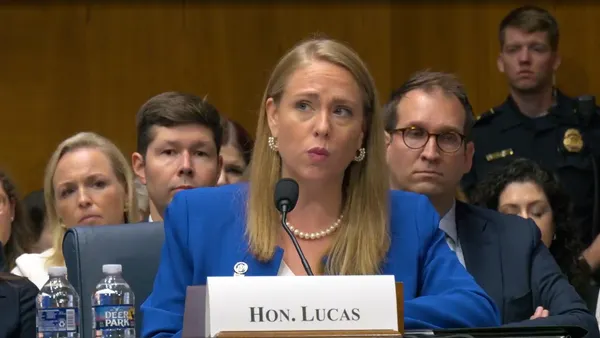Dive Brief:
- U.S. companies facing “seismic shifts” in government policy are reducing philanthropic efforts to promote racial and gender equality while strengthening support for education and greater economic opportunity, the Conference Board said Tuesday.
- Leaders of corporate philanthropy say the biggest obstacle to their goals is demonstrating a return on investment, the Conference Board found in a survey. Navigating U.S. political uncertainty and polarization, and measuring and verifying societal impact also pose big challenges, survey respondents said.
- Changes in philanthropic priorities “may reflect a response to recent DEI [diversity, equity and inclusion] pushback and a pivot to less controversial and more business-aligned themes,” the Conference Board said. Companies are adapting to “shifting political, social and economic dynamics, with a greater focus on business value, measurable outcomes and addressing bipartisan challenges.”
Dive Insight:
Changes in corporate philanthropy coincide with a government backlash against efforts to promote environmental, social and governance goals in the private and public sectors.
Beginning with his first few days in office last month, President Donald Trump has sought to scuttle many of his predecessor’s federal programs promoting DEI.
In a January 21 executive order, Trump also directed federal agencies to pressure the private sector into ending DEI initiatives.
Agency leaders, in cooperation with the attorney general, must submit reports by May 21 recommending how to “encourage the private sector to end illegal discrimination and preferences, including DEI,” according to the order.
The private sector has gotten the message. Vanguard on Friday adjusted its proxy voting guidelines for its engagement with U.S. companies, diluting its board composition recommendations on diversity.
The investment manager’s 2025 U.S. regional proxy voting guidelines exclude a recommendation from its prior-year rules stating that boards should “at a minimum, represent diversity of personal characteristics, inclusive of at least diversity in gender, race and ethnicity.”
While most companies plan to maintain their communication strategies on corporate citizenship, 37% are revising their language to “more neutral and inclusive” wording, the Conference Board said. The changes stem from “sensitivity to polarized social and political contexts.”
So-called corporate citizenship leaders this year view AI, employee-driven programs and “outcome-based philanthropy” as the most effective emerging philanthropic initiatives, the Conference Board said.
Corporate social responsibility strategies that promote education and economic opportunity “are directly linked to long-term business strategies — particularly in tight labor markets,” Andrew Jones, senior researcher at the Conference Board’s ESG Center, said in an email.
“Unlike more polarizing social issues, they have bipartisan support and deliver clear business ROI — strengthening talent pipelines, fostering economic stability in key markets and enhancing corporate reputation,” Jones said in response to questions.
“Even if broader political trends shift, the business case for these focus areas remains strong, making it likely they will persist beyond short-term cycles,” he said.
More than half (53%) of the 121 corporate philanthropy leaders surveyed expect that change in the regulatory landscape will not prompt changes in their budgets or other resources this year, the Conference Board said.
Yet “21% of respondents anticipate increased expectations to demonstrate the cost efficiency of their citizenship programs, suggesting a potential rise in organizational scrutiny over discretionary spending and a greater need to align initiatives with core business priorities and shareholder value,” the Conference Board said.
CFOs can improve the measurement and verification of corporate philanthropy return on investment, Jones said, by taking three steps:
1. Strengthen internal governance of philanthropy by aligning citizenship teams with those focused on finance, human resources, marketing and strategy “to ensure clear reporting structures, budget alignment and business impact;”
2. Integrate philanthropy metrics with financial and operational KPIs. “Instead of treating philanthropy as a siloed effort, companies should link it to brand equity, employee retention and even customer loyalty — especially in industries where sustainability and corporate purpose influence consumer choices,” Jones said;
3. Quantify financial impact with data-driven analysis, including comparing pre- and post-philanthropy outcomes, modeling various scenarios across regions or business units and identifying “a monetary value to outcomes like reduced turnover or increased brand loyalty,” Jones said.













